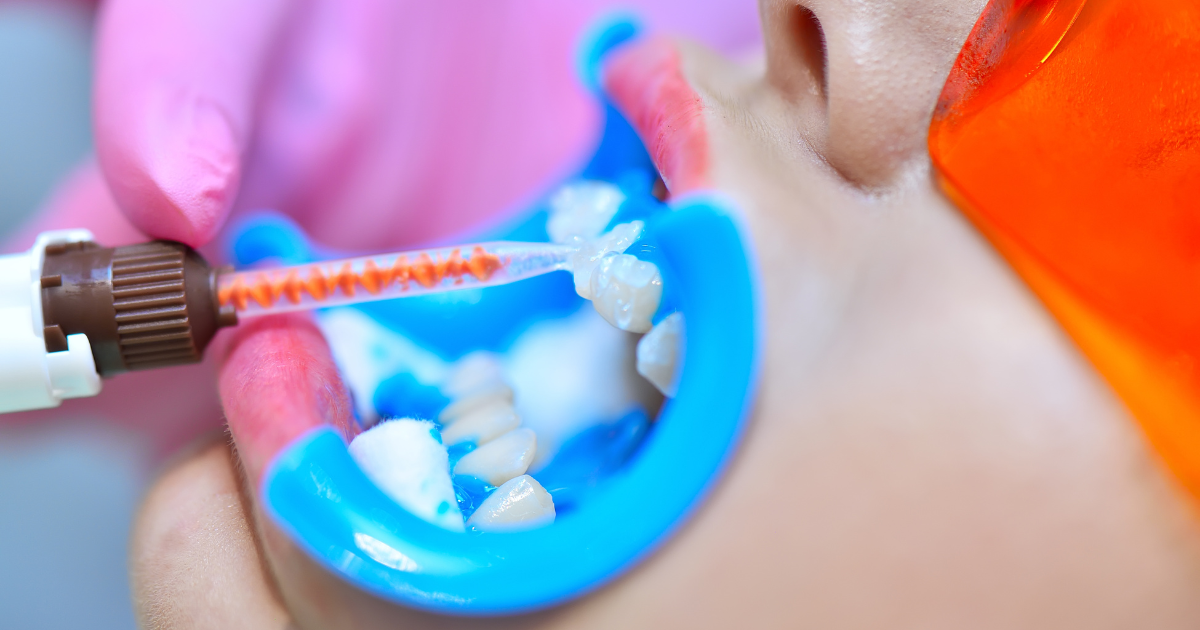Call Us Today 817-737-7668

Tooth discoloration is a common issue that can affect both appearance and confidence. Internal tooth bleaching is a specialized procedure designed to address discoloration within the tooth’s inner structure.
This blog aims to explore various techniques used in internal bleaching, providing insight into how these methods can restore the natural beauty of your smile. By understanding the different techniques available, you can make informed decisions about the best treatment for your needs.
What is Internal Tooth Bleaching?
Internal tooth bleaching is a method used to whiten teeth that have become discolored from within. This process is particularly useful for teeth that have darkened due to trauma or a root canal treatment.
Unlike external tooth whitening, which targets surface stains, internal tooth bleaching addresses discoloration inside the tooth. This technique involves placing a bleaching agent within the tooth’s pulp chamber or root canal, allowing the treatment to penetrate and lighten the discoloration from the inside out.
It is a safe and effective solution for improving the appearance of teeth that have not responded to traditional whitening methods.
Indications for Internal Tooth Bleaching
Internal tooth bleaching in Waco is typically recommended in the following situations:
Tooth Trauma:
If a tooth has been injured or fractured, it can sometimes lead to discoloration that internal bleaching can effectively address.
Root Canal Treatment:
The tooth may eventually turn darker after a root canal. Its original color can be restored with internal bleaching.
Intrinsic Discoloration:
This type of discoloration occurs deep within the tooth due to various factors, such as medication or developmental issues.
Internal bleaching is particularly effective for dealing with these types of deep-seated stains that are not easily removed with external whitening techniques.
Techniques Used in Internal Tooth Bleaching
a. Walking Bleach Technique
- Description: This technique involves placing a bleaching agent inside the tooth cavity and sealing it temporarily.
- Procedure:
- The dentist cleans the tooth and removes any decay.
- A bleaching agent, often a mixture of sodium perborate and hydrogen peroxide, is placed inside the tooth.
- The tooth is sealed with a temporary filling.
- After a few days, the dentist will check the tooth, and if necessary, repeat the process until the desired shade is achieved.
- Benefits: This technique is effective for deep stains and usually requires minimal visits. It is a well-established method with predictable results.
b. Sodium Perborate Technique
- Description: Sodium perborate, combined with hydrogen peroxide, is used to bleach the tooth from within.
- Procedure:
- The dentist prepares the tooth by cleaning and disinfecting it.
- A mixture of sodium perborate and hydrogen peroxide is used to fill the tooth.
- The tooth is sealed, and the bleaching agent works over days.
- Benefits: This method is highly effective for various types of internal discoloration and provides good control over the whitening process.
c. Direct Bleaching
- Description: Bleaching agents are applied directly inside the tooth without a temporary seal.
- Procedure:
- The tooth is cleaned and made ready for treatment by the dentist.
- Bleaching agents are applied directly to the tooth’s interior.
- The treatment is monitored, and adjustments are made as necessary.
- Benefits: Direct bleaching allows for faster results and is particularly useful for teeth with less severe discoloration.
d. In-office Internal Bleaching
- Description: This professional method involves the dentist performing the bleaching procedure in a clinical setting.
- Procedure:
- The dentist evaluates the tooth and cleans it thoroughly.
- A potent bleaching agent is applied inside the tooth.
- The process is monitored carefully, and the results are assessed in real-time.
- Benefits: Professional in-office bleaching often delivers quicker and more dramatic results due to the use of stronger agents and professional techniques.
Comparing the Techniques
When comparing internal tooth bleaching techniques, effectiveness, duration, and safety are key factors:
Effectiveness:
Techniques like walking bleach and sodium perborate are known for their reliable results. Direct and in-office bleaching can also be very effective, especially for severe discoloration.
Duration:
The time needed for each method varies. Walking bleach might take several days, while in-office bleaching can show results within a single visit.
Safety:
All techniques are designed to be safe when performed correctly. They aim to improve tooth appearance without harming the tooth structure.
Aftercare and Maintenance
Post-bleaching care is crucial for maintaining results:
Post-Bleaching Care Instructions:
After the treatment, refrain from consuming any foods or drinks that can cause stains, such as red wine or coffee. Consistently brush and floss your teeth to maintain proper oral hygiene.
Tips for Maintaining Results:
Regular dental check-ups and professional cleanings can help preserve the results. Additionally, using fluoride toothpaste can help protect the tooth’s surface and prevent future discoloration.
When to Consider Professional Help?
Seeking professional help is advisable in the following situations:
Signs Indicating Professional Help:
If you experience significant discoloration that does not respond to over-the-counter products, or if you have underlying dental issues, consulting an endodontist in Waco is beneficial.
Benefits of Professional Advice:
Professionals offer personalized treatment plans, use advanced techniques, and ensure that your tooth’s health is maintained throughout the bleaching process.
Understanding the different techniques used in internal tooth bleaching can help you choose the best method for your needs. Whether opting for walking bleach, sodium perborate, direct bleaching, or professional in-office treatment, each technique offers unique benefits. For personalized advice and effective treatment, consult with an endodontist to achieve the brightest smile possible.



